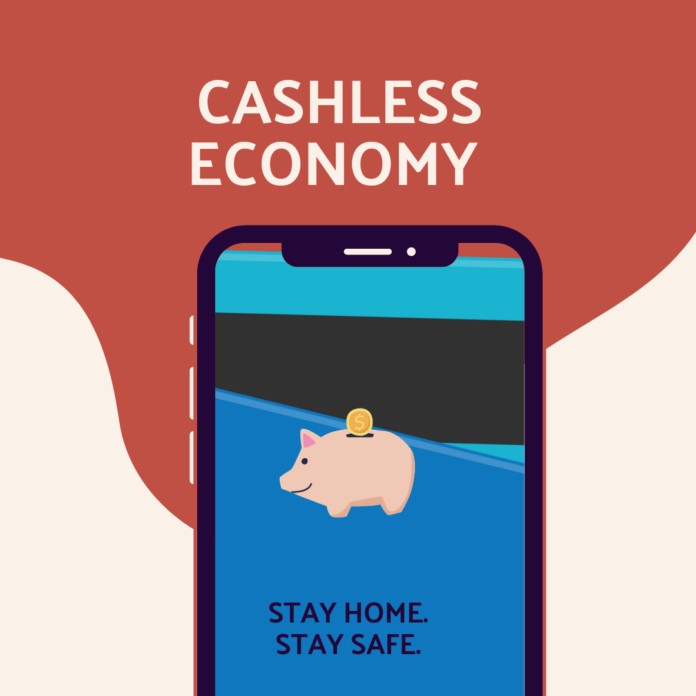A cashless economy refers to an economic state in which transactions or payments are not done with the use of money in its physical such as notes or coins, instead, transactions are done digitally by using mobile wallets, cards, etc. In the past also cashless societies did exist but in the form of a barter system (things are exchanged without the use of money). In the modern era digitalization in transactions has come through digital currencies such as cryptocurrency and bitcoin etc.
The concept of digitalized transactions is becoming popular day by day as it allows the management of everything from recording the data, exchanging money, and keeping invoices to maintained electronically which was considered a time-consuming task in the recent past only.
In the 1990s when electronic banking had just become common, it marked the beginning of non-cash payments. Till the beginning of the first decade of the 21st century, the world saw a great surge towards the use of cashless payment methods. One other reason for the boycott of cash by people was that large amounts of money in physical form were treated with a sense of suspicion as it can be used easily for money laundering or even to provide financial support to terrorists.
Advantages of a cashless society
- Reduced business risks and costs
The use of digital payment methods eliminated several risks such as the use of fake currency, robber, or theft of cash.
- Reducing transmittal of disease via cash
Cash provides a good home for disease-causing organisms (like Salmonella species, Escherichia coli, COVID-19…). However, it is not proven scientifically whether cash poses a particular risk of infection for the public or not.
- Transaction speed
Payments through digital modes have also made transactions faster. A fact denotes that cashless transactions have made billings in hotels and restaurants 15% faster.
- Elimination of high-denomination notes for purposes of reducing criminal activity
Cashless transactions have made tax evasion, transactions, and funding almost impossible resulting in the overall growth of society.
Many countries have also abolished printing high currency notes (as they are most valuable to counterfeit) as a step towards reducing corruption and promoting a cashless economy. The American government declared in 1969 that $100 notes would no longer be printed in the future but the existing notes would remain in use legally.
Disadvantages of a cashless society
- Lack of privacy
In a digitized economy, payment made has to be made traceable. Hence the government and the organization have all the records of transactions made by a person. These data obtained from transactions often leads to widespread; whereby individuals can be tracked by both corporations as well as the government. If by chance these collected data get leaked out, it can even reach hackers and can harm our privacy.
- Problems for the unbanked
Digitalized systems seem to be a troublesome issue for people who completely rely on the physical form of money such as poor people, uneducated people, and aged people. As they are not used to digital methods of payment so problematic issues such as managing their lost cards/ passwords can also create trouble.
- Digital fraud
Digital transactions also lead to a risk of breaching of data by hackers who can use the ye data in any harmful way possible.
- Overspending
It is often seen that the consumers seem to be less conscious of the amount of money they had spent day-to-day when swiping their card to do payment as compared to a fixed amount of money keeping in their wallet and keeping a record of it.
Factual description
- Slovakia, a country in East most Europe banks made a record by issuing 5.5 million payment cards altogether in the year 2016.
- Debit cards hold the greatest share of issued payment cards for current accounts which were followed by credit cards and prepaid cards(according to 2016 data).
- Payments made by payment cards are increasing year-on-year by 14 per cent and the no. of executed transactions is also rising by 7 per cent every year.
- At present more than 82 per cent of issued cards are contactless making it the most popular among the customers using digital modes of transactions.
- In the year 2012, it was only 1,2 per cent of all payments was made by contactless payment cards which increased to more than 38 per cent by 2016.
- Mobile wallets, which are another famous method of digital transaction are so huge so big that $620 billion US Dollars will move through mobile wallets & payments in 2016 which will rise to $1 Trillion US Dollars by 2022.
Like every coin has two sides the concept of a cashless economy has its pros and cons which cannot be neglected. Yet, if the government takes some steps towards switching to digitalization, with the introduction of safer methods and stricter, it can be the most suitable option.
On the people’s side, it is important as well that they take proper safety measures such as not sharing the details of the card, bank, etc., to make this decision of being a cashless economy successful.










